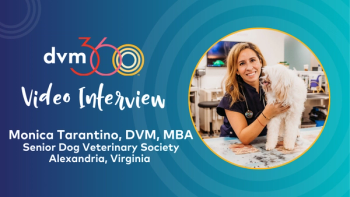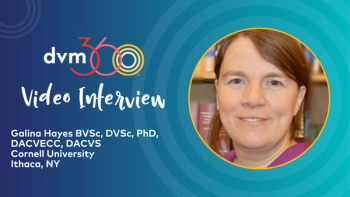
Sharp tools and good technique: A veterinary expert's advice on canine tooth extraction
Dr. Barden Greenfield can help you turn the tragedy of this particularly difficult extraction into a triumphant victory.
Our story begins with a veterinarian struggling to extract a canine tooth, tears beginning to fill her eyes. If you've found yourself in this exact same circumstance, don't despair! Our veterinarian in the trenches, Dr. Sarah Wooten, has been there. And help is here by way of veterinary dentist Dr. Barden Greenfield. In this video, he walks you through how to get just the right grip on this often frustrating situation.
Pressed for time? Here's the anatomy of the video (note that exact times may vary):
0:20: Use the right equipment, including a high-speed unit, sharpened luxators and elevators, and, of course, a good familiarity with the procedure. Skip this step and “it's kind of like going into a gun fight with a knife.”
1:07: Make sure you have a proper flap. “You have to elevate that gum enough that you get full exposure of the tooth, especially a canine tooth.”
1:15: Remove enough buccal bone. “Remove enough to remove the tooth, but don't remove too much that you cause fatigue of any areas around, especially the mandible.”
1:38: Fatigue the periodontal ligament space using luxators and elevators. “The biggest thing I can tell people is patience. You can't be in a rush with this.”
3:00: Once you've got mobility, use your dental extraction forceps. “Those forceps aren't meant to yank the tooth out. It's basically turn and pull, like I'm taking a cork out of a bottle.”
3:22: The tooth is out! Smooth the bone with a diamond bur to avoid spicules. “Who wants to have an oral surgery that has spicules there where it can rub against the flap and can harm and be painful to your patient?”
3:40: Cut the periosteal layer to get good flap closure. “If you release the periosteal layer, it drops that tissue down-kind of slap over the top.”
4:02: You're ready to close, but wait! First, take a postoperative image. “They are a confirmation that you completely did the procedure.”
4:33: Close with a simple interrupted suture pattern. “Make sure it's tension-free.”
4:38: Prescribe anti-inflammatory drugs, but NO NEED for antibiotics. “If you ask 100 veterinary dentists, you'll get 100 people telling you, do not use them. There's no need. If you've done a good surgical procedure, flushed the alveolus out with some saline, good tension-free closure, you're done.”
Newsletter
From exam room tips to practice management insights, get trusted veterinary news delivered straight to your inbox—subscribe to dvm360.




